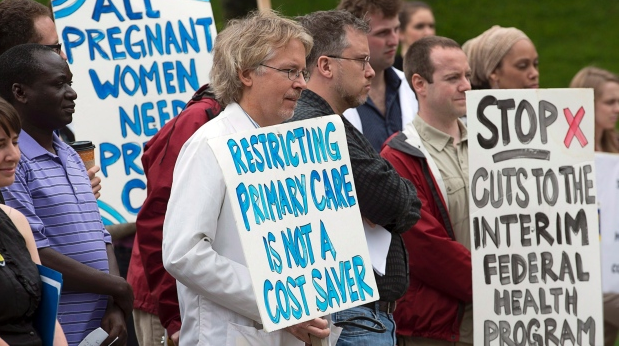It has been over a year and a half since reforms to the Interim Federal Health program (IFH) resulted in cuts to refugee health benefits. In that time we have seen an urban health crisis unfold across the country. As we have documented in our several reports on the IFH cuts, the most recent about system level costs, risks and responses, refugees and claimants now have less access to health care services, receive poorer quality care when care is sought, and are being placed in dangerous and vulnerable health situations, such as pregnant women who have been denied care.
These outcomes were predictable and were avoidable, but the IFH cuts proceeded regardless. Recently, I presented to the International Conference on Urban Health about the IFH cuts, the urban health crisis that these cuts created, and what we can learn from the experience to help us to respond to future crises for vulnerable or marginalized populations.
Fundamentally, the IFH cuts demonstrate the importance of considering health in all policies. Policy decisions made far beyond the health care system can have significant health implications. These decisions can create negative health outcomes that affect the population as a whole, but vulnerable or marginalized populations are often more severely impacted than other groups. The negative health impacts of the IFH cuts were predictable and, if the federal government had incorporated health into their policy making, they could have been avoided.
The effects of IFH cuts were difficult to respond to in part because the federal government did not engage those who were affected. As a result, provinces, regional health authorities, and service providers were forced to respond, and refugees were made more vulnerable. The people who saw the impact in their emergency rooms, health clinics and settlement agencies did not have control over the policy levers to reverse the cuts, and many refugees and claimants experienced immediate negative health outcomes. The longer term health impacts for refugees and claimants are unclear.
This highlights the importance of contingency planning, both by policy makers and service providers, to ensure that the negative impacts of an unexpected policy change can be reduced or avoided. At a policy level, all levels of government need to ensure that they have the capacity to reallocate resources in times of crisis and are nimble enough to do so. And it is critical that policy makers are able to complete rapid health equity impact assessments that ask whether a policy may have negative health impacts, for whom, and what can be done about it.
For service providers, the capacity to respond to crises is often limited by resources. However, service providers can ensure that they have policies and protocols to respond to emergency situations, including specific directions that nobody should be denied care.
Finally, the IFH cuts showed the importance of advocacy at multiple levels and of coalitions to share information and plan responses to decisions that may negatively affect the health of vulnerable populations. The coalitions that formed in opposition to the IFH cuts incorporated a wide range of individuals and groups, from physicians, midwives, and other health care providers to professional organizations with broad memberships. The reach of these coalitions was large – members were able to connect with a broad range of people who had a critical role to play in minimizing the impacts of the IFH cuts, from frontline workers to senior government decision-makers. These networks need to be well-established before a crisis occurs in order to be able to immediately take up leadership and coordinating roles.
The negative and inequitable health impacts of the IFH cuts were both foreseeable and avoidable – the reforms should never have proceeded. While the IFH cuts continue to have negative and inequitable health impacts, the actions of a broad range of groups with shared objectives have made good progress in protecting and promoting good health for Canada’s refugees and claimants.
